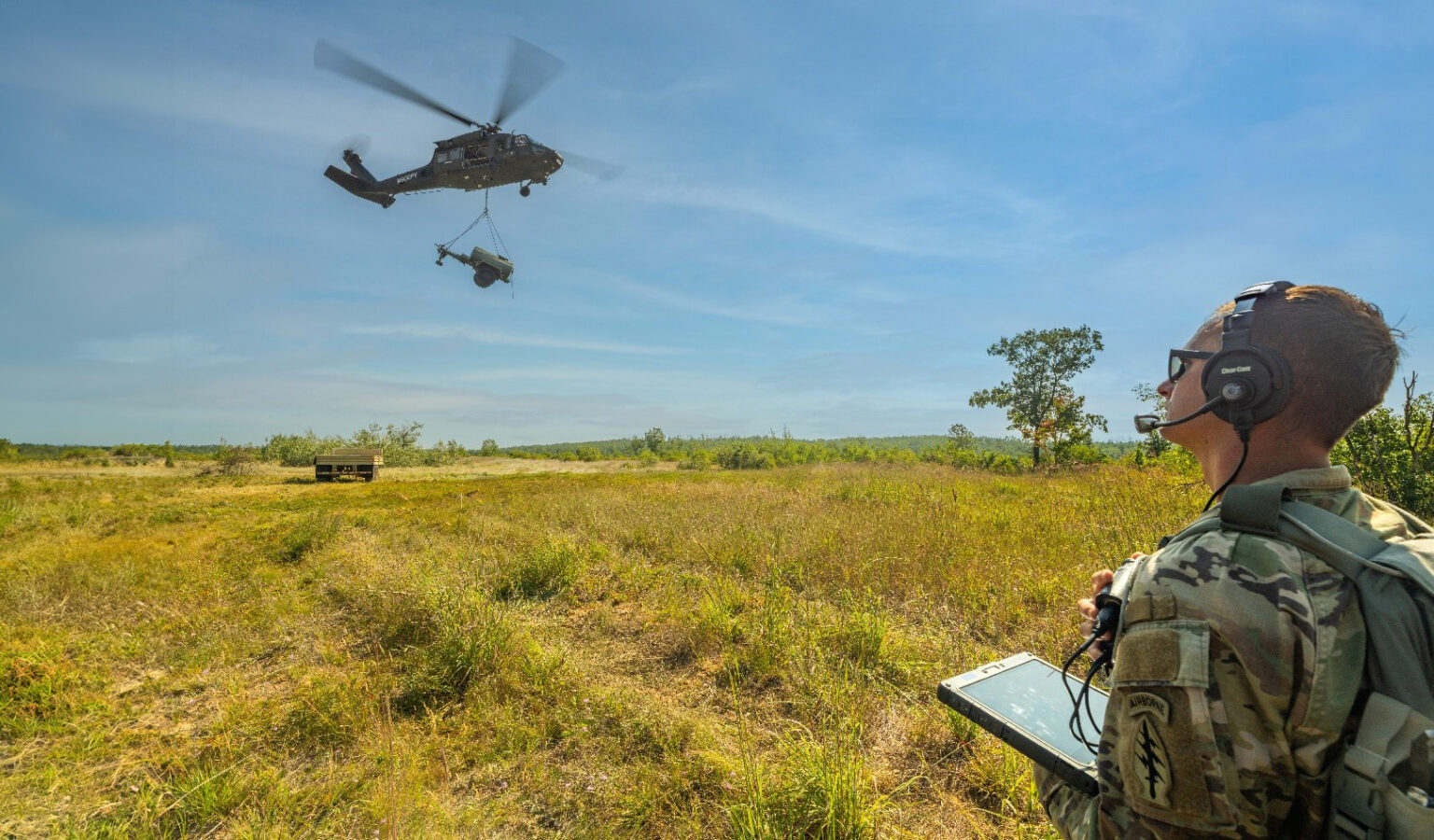For the first time, a U.S. Soldier using a handheld tablet planned and executed real-world missions at a military exercise with Sikorsky’s Optionally Piloted Vehicle (OPV) Black Hawk helicopter. The OPV UH-60 Black Hawk performed parachute drops, hovered on its own while sling loads were attached and flew a simulated medical evacuation under the guidance of the Soldier, who was not an aviator or engineer and had less than an hour of training on the system.
Sikorsky, a Lockheed Martin subsidiary, brought the OPV Black Hawk to Exercise Northern Strike 25-2 in Michigan in August to show how an autonomous helicopter can expand mission reach and reduce risk to Soldiers. Details of what the OPV accomplished were released on October 30. The helicopter’s participation came through a partnership with the Joint Personnel Recovery Agency and the Defense Advanced Research Projects Agency.
Flight testing of the OPV Black Hawk began in 2019, and it flew for the first time without anyone on board three years later. A fly-by-wire control system coupled with Sikorsky’s MATRIX autonomy flight control software guides the helicopter.
The OPV Black Hawk has automated obstacle avoidance, and routes can be changed by an operator while it is in the air. It doesn’t need constant contact with its human operator, and it can act on instructions from multiple people at different points in a mission.
At Exercise Northern Strike 25-2, the OPV Black Hawk operated fully under the control of a warfighter instead of a trained test pilot or engineer for the first time. The unidentified sergeant first class directed a payload to a location 70 nautical miles away and commanded several precision airborne drops.
During its flights in August, the OPV had a safety pilot on board. That was dictated by law because the exercise was in domestic U.S. airspace and managed by the Federal Aviation Administration.
Among the other firsts for the OPV Black Hawk:
- Exercise 1: Parachute drops and logistics recovery: From a Coast Guard boat on Lake Huron, a Soldier planned and executed a resupply operation from 70 nautical miles away. After the cargo was unloaded, the Soldier used the tablet to direct the OPV Black Hawk to make racetrack patterns over the lake while Soldiers onboard executed two precision parachute drops at different altitudes.
- Exercise 2: Water tank external sling load: The OPV Black Hawk performed its first autonomous hookup of an external load while in flight. Using its hover stability capabilities, the helicopter held its position as Soldiers attached a 1,315-kilogram water tank without a pilot’s help. “The amount of experience that a pilot has, especially doing sling load operations and hookups — it takes really years to develop that capability,” Erskine “Ramsey” Bentley, director of strategy and business development for Sikorsky Advanced Programs, told The War Zone website. “One of the things that we’ve heard from operators on the ground is that the MATRIX capability and the autonomy [on the OPV] actually provides a much more stable platform than with a human pilot on board.”
- Exercise 3: HIMARS external sling load and medical evacuation: The OPV Black Hawk executed six autonomous hovering hookups to transport High Mobility Artillery Rocket System (HIMARS) launch tubes to another landing area. A Soldier then used the OPV to lead a simulated medical evacuation, including a tail-to-tail patient transfer to a piloted Black Hawk at an unimproved landing zone.
“With lives on the line, Sikorsky’s MATRIX flight autonomy system can transform how military operators perform their missions,” said Rich Benton, vice president and general manager of Sikorsky. “An optionally piloted Black Hawk aircraft can reduce pilot workload in a challenging environment or complete a resupply mission without humans on board. In contested logistics situations, a Black Hawk operating as a large drone offers commanders greater resilience and flexibility to get resources to the point of need.”

